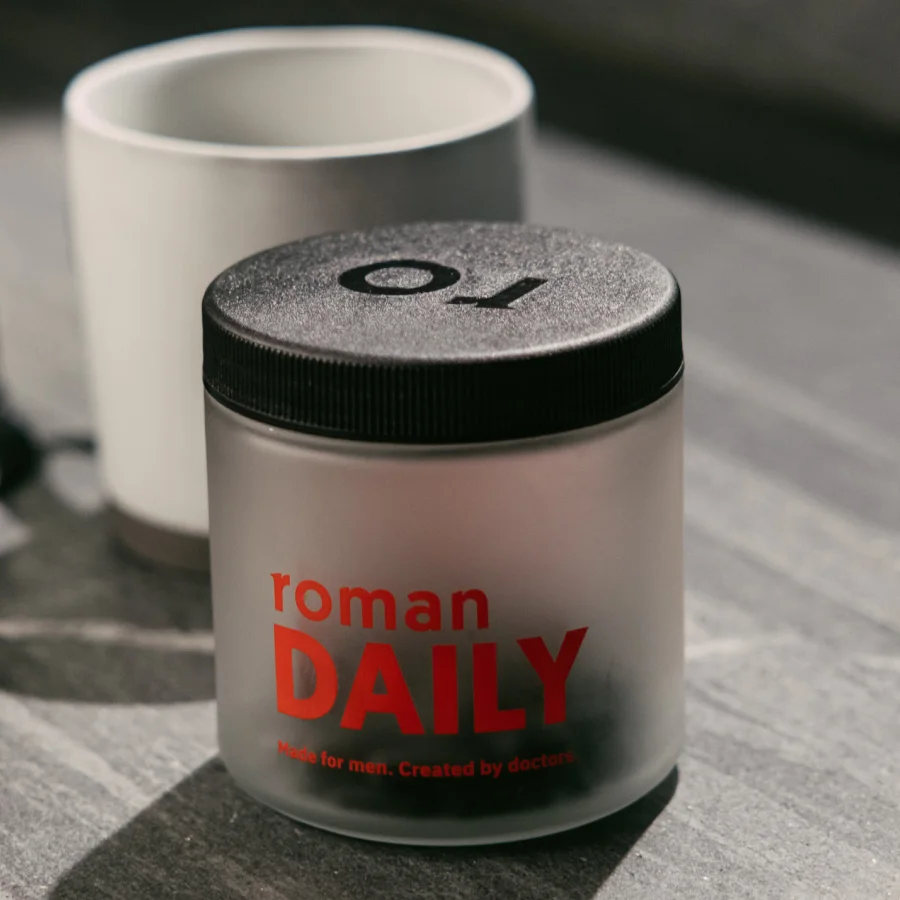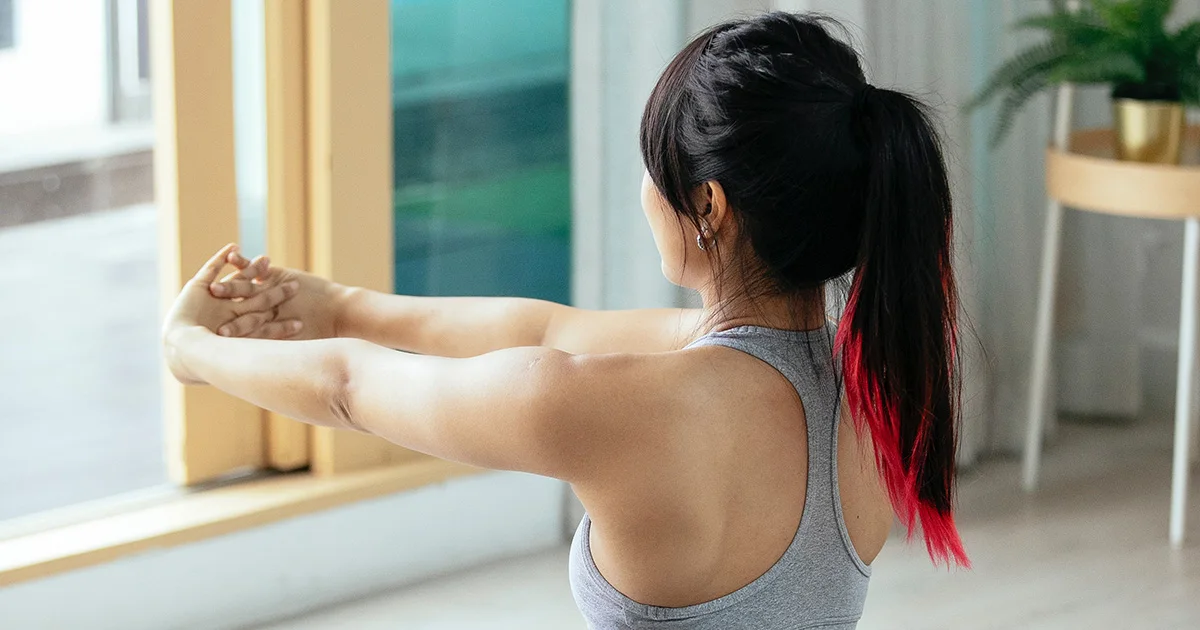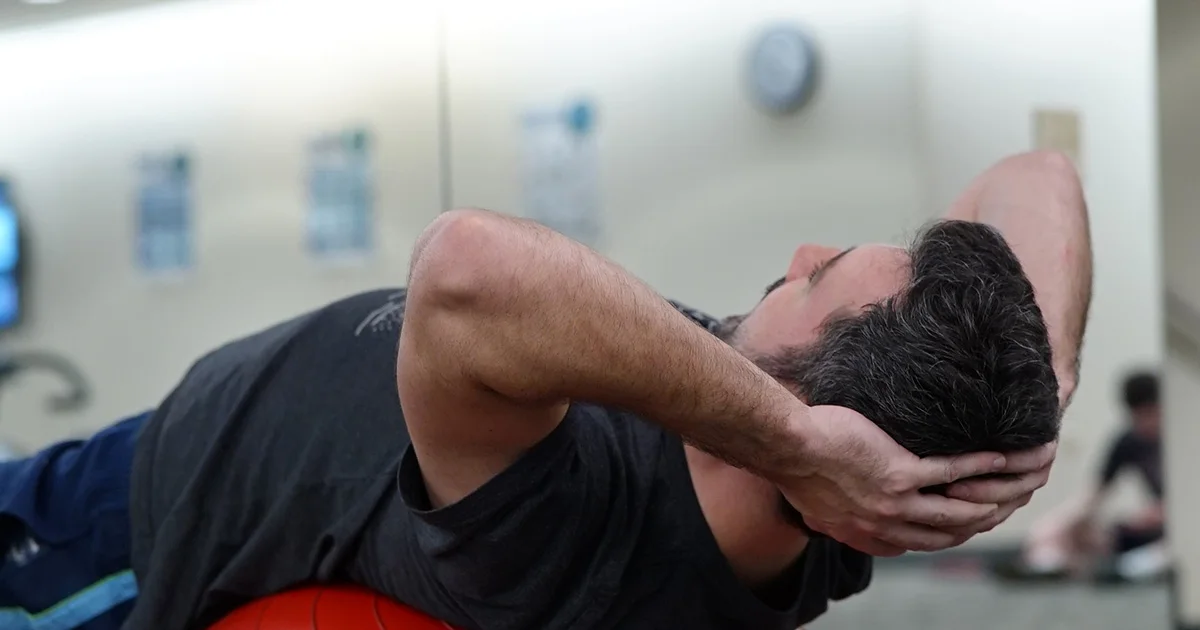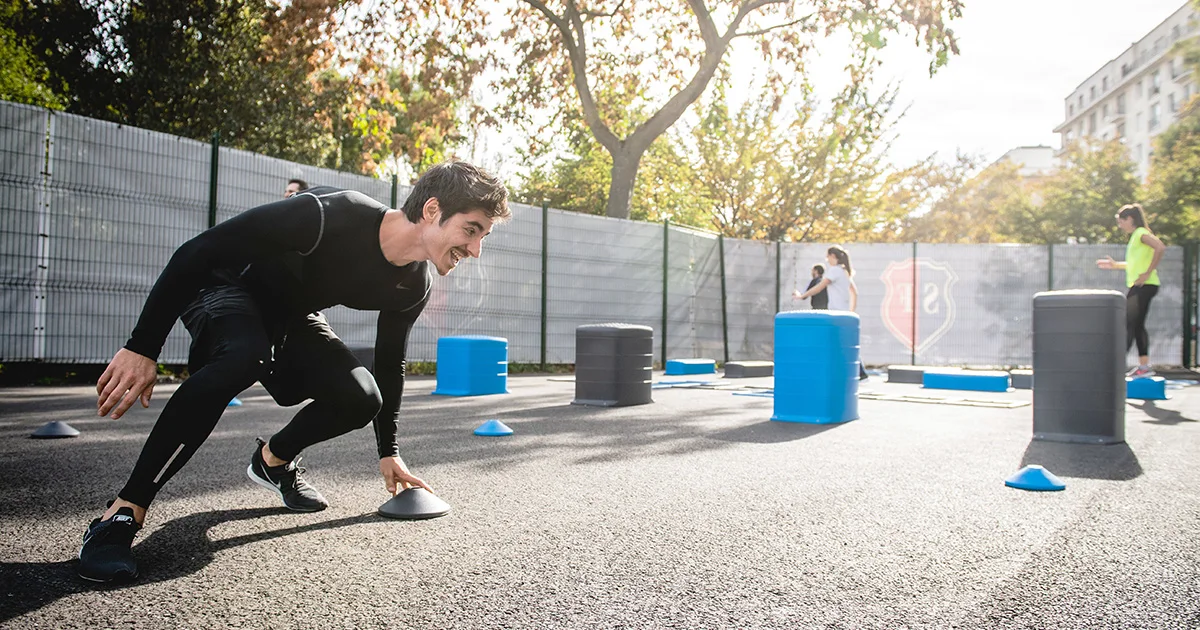Here's what we'll cover
Here's what we'll cover
When it comes to vitamins, vitamin D stands out. That’s because while the very definition of these compounds is that we need them to survive but can’t make them ourselves, in the case of vitamin D, with a little help from the sun we actually can. But as the old adage goes, just because you can do something, doesn’t mean you should.
Our bodies produce a sort of immature form of vitamin D that, when exposed to sunlight, turns into the real deal. But that sunlight can carry risks, so if you’ve got a vitamin D deficiency, laying on a beach or in a tanning bed, or using a vitamin D lamp probably isn’t your best bet.
You may be wondering why vitamin D is so important. Not getting enough vitamin D causes a condition called rickets in children, which can stunt their growth. In adults, deficiency can lead to a condition called osteomalacia, which can lead to fractures because it softens bones. Vitamin D deficiency can also cause pain and weakness in your muscles and bones (Chauhan, 2020).
Unfortunately, many of us have a problem getting all the vitamin D we need. People who have darker skin require more sunlight to make the same amount of vitamin D, making it hard for them to get enough (Chauhan, 2020). Also, the further you live from the equator, the shorter your daily dose of sunlight will be. Within the United States, for example, people who live anywhere north of a line drawn coast to coast through Atlanta will be at a higher risk of vitamin D deficiency (Leary, 2017).
The stats on vitamin D deficiency aren’t so sunny, either. A massive 41.6% of adults in the United States don’t get enough, and the numbers are higher for people with darker skin: 82.1% of African Americans and 69.2% of Hispanics don’t get enough vitamin D (Forrest, 2011).
But even if you live in an area that gets abundant sunlight (lucky you), it’s not as simple as just spending time in the sun. Getting more sun exposure without sunscreen increases your risk of skin cancer—and your body can’t make vitamin D from UVB rays if you’re adequately protected with sunscreen (Savoye, 2018; Chauhan, 2020).
Skin cancer is dangerous, so trying to squeeze in time in the sun to get enough of this vitamin isn’t worth the risk. That’s why people are looking for other options like supplements and vitamin D lamps.
What is a vitamin D lamp?
A vitamin D lamp is a lamp that emits UVB light (not all lamps do), helping your body to make vitamin D. They’re also marketed as sun lamps since they mimic natural sunlight.
Companies also sell “vitamin D lamps” as “light therapy lamps” and claim they can help people with seasonal affective disorder (SAD). Most of us hate how the sun sets before 5 pm during the winter months, but the lack of sunlight spurs a type of depression for people with SAD. For these people, UV lights may be helpful. One meta-analysis found that UV light has a positive effect on mood and well-being (Veleva, 2018).
You’re better off using other ways to increase your vitamin D, though. Yes, light therapy lamps can help your body make vitamin D, but you shouldn't ignore their risks. They’re able to do this because they use UV light, which means spending time under them can increase your risk of skin cancer just as laying out in the sun would. They’re essentially smaller tanning beds, which are also known to increase your risk of this dangerous cancer (Martin, 2017).
How else can you increase your vitamin D?
Luckily, exposing ourselves to the sun’s potentially harmful rays isn’t the only option. You can get all the vitamin D you need and more from food or add supplements if that’s not enough.
There are two forms of vitamin D (D2 and D3), but it’s important to remember that they do the same thing in your body. Your liver turns them into the same active form is this vitamin once it’s in your body. Studies have found that D3 is more effective at raising vitamin D levels than D2 but that they can both increase blood levels of this vitamin and keep deficiency at bay (Tripkovic, 2017). So instead of worrying about which form you’re getting, focus on just getting enough.
Vitamin D2 is mostly found in plant sources and fortified foods, whereas D3 is in meat and dairy products. Oily fish (like sardines, salmon, and mackerel), egg yolks, and beef liver are the best vitamin D-containing foods. For people who don’t eat meat or animal products, opt for mushrooms or foods with the vitamin added in, like soy milk, orange juice, and certain breakfast cereals (NIH, 2020).
What is vitamin D, and why is it important?
Vitamin D is crucial to our bone health both as children and adults. Not getting enough as an adult causes your bones to soften, which increases your risk of fractures (Sizar, 2020). Although this vitamin helps your body absorb and use calcium to build strong bones, it also helps regulate insulin, stimulates immune function, and supports heart health (Chauhan, 2020).
Vitamin D deficiency
Here’s the thing, though: if something’s really important in your body, not getting enough can lead to many health problems. It’s not just detrimental to our bone health. Between 40 and 60% of people with generalized muscle aches and bone pain actually have a vitamin D deficiency (Chauhan, 2020).
Those aren’t the only problems for people who don’t get enough of the sunshine vitamin, though. People with low levels of vitamin D are more likely to have other health issues, including depression, heart disease, type 2 diabetes, and metabolic syndrome (Anglin, 2012; Parker, 2010).
Many people who are vitamin D deficient don’t experience any symptoms at all. Your healthcare provider might recommend a simple blood test to determine if you have a deficiency. If you do, they can recommend increasing your intake of vitamin D-rich foods or using a supplement (Sizar, 2020).
If you’ve been experiencing fatigue, weakness, bone pain, or muscle twitching, these may be signs you haven’t had enough vitamin D for a while. A healthcare professional can work with you on figuring out your levels and how to get them back to a healthy range (Sizar, 2020).
DISCLAIMER
If you have any medical questions or concerns, please talk to your healthcare provider. The articles on Health Guide are underpinned by peer-reviewed research and information drawn from medical societies and governmental agencies. However, they are not a substitute for professional medical advice, diagnosis, or treatment.
Ali, N. S., & Nanji, K. (2017). A Review on the Role of Vitamin D in Asthma. Cureus 9 (5). doi: 10.7759/cureus.1288. Retrieved from https://www.cureus.com/articles/7343-a-review-on-the-role-of-vitamin-d-in-asthma
Anglin, R., Samaan, Z., Walter, S., & McDonald, S. (2013). Vitamin D deficiency and depression in adults: Systematic review and meta-analysis. British Journal of Psychiatry, 202 (2), 100-107. doi: 10.1192/bjp.bp.111.106666. Retrieved from https://www.cambridge.org/core/journals/the-british-journal-of-psychiatry/article/vitamin-d-deficiency-and-depression-in-adults-systematic-review-and-metaanalysis/F4E7DFBE5A7B99C9E6430AF472286860
Budhathoki, S., Hidaka, A., Yamaji, T., Sawada, N., Tanaka-Mizuno, S., Kuchiba, A., et al. Plasma 25-hydroxyvitamin D concentration and subsequent risk of total and site specific cancers in Japanese population: large case-cohort study within Japan Public Health Center-based Prospective Study cohort. BMJ 2018; 360 :k671. doi: 10.1136/bmj.k671. Retrieved from https://www.bmj.com/content/360/bmj.k671
Chauhan, K., Shahrokhi, M., Huecker, M. (2020). Vitamin D. In: StatPearls [Internet]. Retrieved from https://www.ncbi.nlm.nih.gov/books/NBK441912/
Demer, L. L., Hsu, J. J., & Tintut, Y. (2018). Steroid Hormone Vitamin D. Circulation Research, 122 (11), 1576–1585. doi: 10.1161/circresaha.118.311585. Retrieved from https://www.ahajournals.org/doi/10.1161/CIRCRESAHA.118.311585
Forrest, K. Y., & Stuhldreher, W. L. (2011). Prevalence and correlates of vitamin D deficiency in US adults. Nutrition Research, 31 (1), 48–54. doi: 10.1016/j.nutres.2010.12.001. Retrieved from https://pubmed.ncbi.nlm.nih.gov/21310306/
Kent, S. T., McClure, L. A., Crosson, W. L., Arnett, D. K., Wadley, V. G., & Sathiakumar, N. (2009). Effect of sunlight exposure on cognitive function among depressed and non-depressed participants: a REGARDS cross-sectional study. Environmental Health : A Global Access Science Source, 8, 34. doi: 10.1186/1476-069X-8-34. Retrieved from https://pubmed.ncbi.nlm.nih.gov/19638195/
Leary, P. F., Zamfirova, I., Au, J., & McCracken, W. H. (2017). Effect of Latitude on Vitamin D Levels. The Journal of the American Osteopathic Association, 117, 433–439. doi: 10.7556/jaoa.2017.089. Retrieved from https://pubmed.ncbi.nlm.nih.gov/28662556/
Martin, B., Wilkerson, A. H., Pham, L., Nahar, V. K., Boyas, J. F., Black, W. H., & Brodell, R. T. (2017). Indoor tanning and its use among patients with skin cancer. Journal of the Dermatology Nurses' Association, 9 (6), 303-305. doi: 10.1097/jdn.0000000000000354. Retrieved from https://journals.lww.com/jdnaonline/Abstract/2017/11000/Indoor_Tanning_and_Its_Use_Among_Patients_With.6.aspx
Martins, D., Wolf, M., Pan, D., Zadshir, A., Tareen, N., Thadhani, R., Felsenfeld, A., Levine, B., Mehrotra, R., & Norris, K. (2007). Prevalence of cardiovascular risk factors and the serum levels of 25-hydroxyvitamin D in the United States: data from the Third National Health and Nutrition Examination Survey. Archives of Internal Medicine, 167 (11), 1159–1165. doi: 10.1001/archinte.167.11.1159. Retrieved from https://pubmed.ncbi.nlm.nih.gov/17563024/
Nair, R., & Maseeh, A. (2012). Vitamin D: The "sunshine" vitamin. Journal of Pharmacology & Pharmacotherapeutics, 3 (2), 118–126. doi: 10.4103/0976-500X.95506. Retrieved from https://www.ncbi.nlm.nih.gov/pmc/articles/PMC3356951/
National Institutes of Health (NIH). (2017). Office of dietary supplements - vitamin D. Retrieved from https://ods.od.nih.gov/factsheets/VitaminD-HealthProfessional/
Oliver, H., Ferguson, J., & Moseley, H. (2007). Quantitative risk assessment of sunbeds: impact of new high power lamps. The British Journal of Dermatology, 157 (2), 350–356. doi: 10.1111/j.1365-2133.2007.07985.x. Retrieved from https://pubmed.ncbi.nlm.nih.gov/17650177/
Parker, J., Hashmi, O., Dutton, D., Mavrodaris, A., Stranges, S., Kandala, N.-B., Clarke, A., & Franco, O. H. (2010). Levels of vitamin D and cardiometabolic disorders: Systematic review and meta-analysis. Maturitas, 65 (3), 225–236. doi: 10.1016/j.maturitas.2009.12.013. Retrieved from https://www.sciencedirect.com/science/article/abs/pii/S037851220900468X
Savoye, I., Olsen, C. M., Whiteman, D. C., Bijon, A., Wald, L., Dartois, L., Clavel-Chapelon, F., Boutron-Ruault, M. C., & Kvaskoff, M. (2018). Patterns of Ultraviolet Radiation Exposure and Skin Cancer Risk: the E3N-SunExp Study. Journal of Epidemiology, 28 (1), 27–33. doi: 10.2188/jea.JE20160166. Retrieved from https://www.ncbi.nlm.nih.gov/pmc/articles/PMC5742376/
Sizar, O., Khare, S., Goyal, A., Bansal, P., & Givler, A. (2020). Vitamin D Deficiency [Review of Vitamin D Deficiency]. In: StatPearls [Internet]. Retrieved from https://www.ncbi.nlm.nih.gov/books/NBK532266/
Tripkovic, L., Wilson, L. R., Hart, K., Johnsen, S., De Lusignan, S., Smith, C. P., . . . Lanham-New, S. A. (2017). Daily supplementation with 15 ΜG vitamin D 2 compared with vitamin D 3 to increase WINTERTIME 25-hydroxyvitamin D status in healthy South Asian and white EUROPEAN women: A 12-wk randomized, placebo-controlled food-fortification trial. The American Journal of Clinical Nutrition, 106 (2), 481-490. doi: 10.3945/ajcn.116.138693. Retrieved from https://academic.oup.com/ajcn/article/106/2/481/4557614?login=true#110373260
Urashima, M., Segawa, T., Okazaki, M., Kurihara, M., Wada, Y., & Ida, H. (2010). Randomized trial of vitamin D supplementation to prevent seasonal influenza A in schoolchildren. The American Journal of Clinical Nutrition, 91 (5), 1255–1260. doi: 10.3945/ajcn.2009.29094. Retrieved from https://pubmed.ncbi.nlm.nih.gov/20219962/
Veleva, B. I., Van Bezooijen, R. L., Chel, V. G., Numans, M. E., & Caljouw, M. A. (2018). Effect of ultraviolet light on mood, depressive disorders and well-being. Photodermatology, Photoimmunology and Photomedicine, 34 (5), 288-297. doi: 10.1111/phpp.12396. Retrieved from https://onlinelibrary.wiley.com/doi/full/10.1111/phpp.12396
Young, M., & Xiong, Y. (2018). Influence of vitamin D on cancer risk and treatment: Why the variability?. Trends in Cancer Research, 13, 43–53. Retrieved from https://www.ncbi.nlm.nih.gov/pmc/articles/PMC6201256










